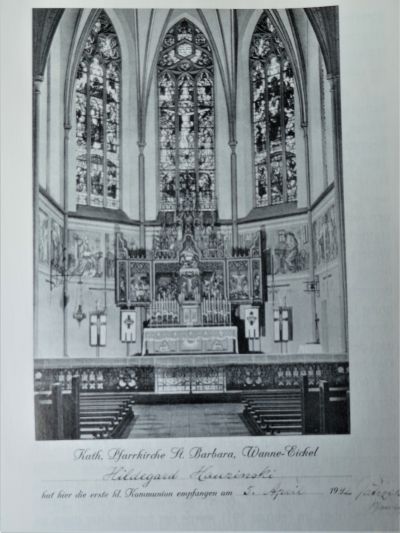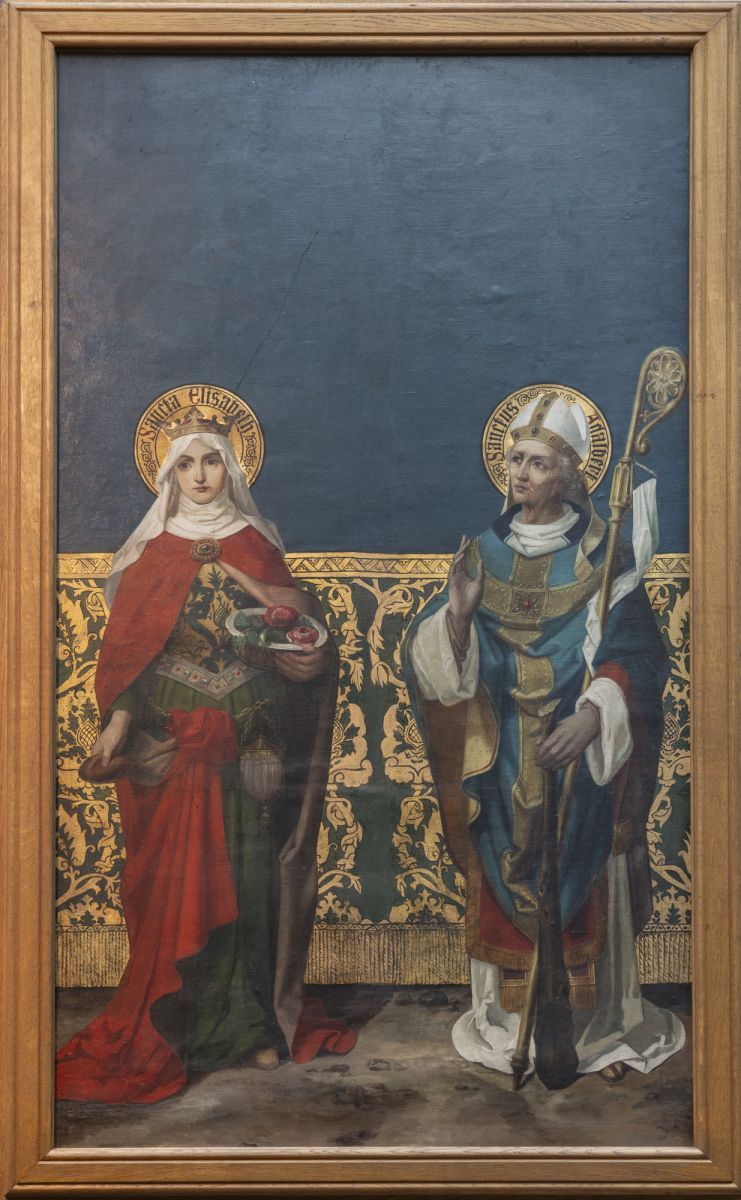Adalbert and Elisabeth – A Ruhr Polish altarpiece in Herne-Röhlinghausen
Mediathek Sorted























A prominent Polish national saint
Adalbert (born around 956) came from a noble family of the Slavnik clan, whose territory lay in the eastern and southern Bohemia. He received his education at the cathedral school in Magdeburg. In 981, Bishop Thietmar of Prague brought him into the clergy of St. Vitus in the castle district (Hradčany) in Prague and ordained him as a priest. When Thietmar died the following year, he was succeeded by Adalbert. However, the young bishop soon came into conflict with the Bohemian nobility and parts of the clergy, since he took decisive steps to counter problems that had arisen in the church. In 988, he was forced to leave Prague. Although he returned to Bohemia, he did not remain there long (approx. 992–995) due to ongoing disputes with the nobility.
In 996, Pope Gregory V granted the unsuccessful Prague bishop’s request to be given a new mission: converting the heathen peoples in eastern Europe to Christianity. The following year, Adalbert moved to Gniezno, where he met the Polish duke Bolesław Chrobry in the region inhabited by the Old Prussians, which would later become West and East Prussia. After initially preaching in the Gdańsk area, his work in Samland was met with fierce resistance: on 23 April 997, the unwelcome missionary was murdered together with his two assistants. According to legend, he was murdered near Tenkitten (now Primorsk) in the Vistula Lagoon, not far from Königsberg (Kaliningrad) in the region known as East Prussia which is today under Russian control. He is said to have been murdered by a club or rowing oar. Others claim he was speared by a lance. A short time later, Bolesław Chrobry purchased the corpse from the murderers – legend has it that he had him weighed out in gold – and first buried him in the Benedictine abbey at Trzemeszno, about 15 kilometres to the east of Gniezno.
The close and trusting relationship between Adalbert and Otto III (980–1002) would be of long-lasting importance in Polish-German history. During that period, Otto III was the Emperor of the Holy Roman Empire of the German Nation. During the final years of his life, Adalbert served the young emperor as a father-like friend and as a spiritual advisor. Otto was deeply affected by the martyr’s death suffered by the missionary bishop and made great efforts to have him canonised by the Pope, who did so shortly afterwards in 999. The following spring, Otto embarked on a pilgrimage to Gniezno with a large retinue, where he arranged for reliquaries belonging to Adalbert to be interred in a specially endowed altar in the Church of the Blessed Virgin Mary (which later became the cathedral).
During the ceremonies that followed, Otto III bestowed the titles “frater et cooperator imperii” and “amicus populi romani” upon the Polish duke Bolesław Chrobry, thus raising his noble rank. This official “Act of Gniezno” is regarded as an important step towards the development of a Polish kingdom that was independent of the German “regnum”. Consequently, in 1025, Bolesław Chrobry had himself crowned Polish king after being elevated to that status. Through the establishment of the Archbishopric of Gniezno as a result of the Emperor’s visit, the Catholic Church of Poland was separated from the German church organisation and became independent.
As a result of the events of the year 1000, the City of Gniezno, its cathedral and the veneration of Adalbert had an extraordinary impact on the national psyche of the Polish people – and still do today. Even now, Adalbert figures and Adalbert windows grace numerous houses of worship from the Baltic Sea to the Carpathians; the archbishop of Gniezno also bore the title of Polish primate.





















































































